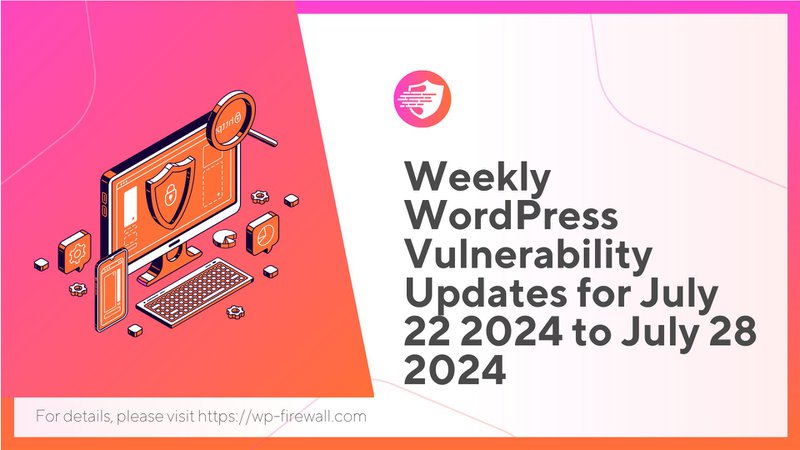
Introduction
Welcome to this week's WordPress vulnerabilities update, crucial for site administrators to maintain robust security. Covering the period from July 22, 2024, to July 28, 2024, this report provides insights into the latest security threats. Staying informed about these vulnerabilities is essential for protecting your site and user data from potential breaches.
Summary of Key Vulnerabilities
During this reporting period, several vulnerabilities were identified, both patched and unpatched. Here are the key highlights:
Unpatched and Critical Vulnerabilities:
- Plugin A: A critical SQL injection vulnerability was discovered, allowing unauthorized database access.
- Theme B: An unpatched XSS (Cross-Site Scripting) vulnerability could lead to site defacement and user data compromise.
Patched and Critical Vulnerabilities:
- Plugin C: A high-severity CSRF (Cross-Site Request Forgery) vulnerability has been patched, preventing unauthorized actions on behalf of authenticated users.
- Theme D: A recent update fixed a medium-severity security misconfiguration vulnerability.
Severity Levels and Statistics:
- Total vulnerabilities reported: 25
- Critical: 6, High: 8, Medium: 7, Low: 4
- Patched: 15, Unpatched: 10
- Common types: XSS, CSRF, SQL Injection, Security Misconfiguration
Impact of Vulnerabilities
These vulnerabilities pose significant risks to WordPress sites, potentially leading to severe consequences such as:
- Data Breaches: Unauthorized access to sensitive user data.
- Site Defacement: Alteration of site content by attackers.
- Malware Infections: Installation of malicious software that compromises site functionality.
For instance, the unpatched SQL injection vulnerability in Plugin A can allow attackers to retrieve and manipulate data from the website's database, resulting in data theft or corruption.
Mitigation and Recommendations
To mitigate these vulnerabilities, WordPress site administrators should:
- Update Plugins and Themes: Regularly check for updates and apply them promptly.
- Implement Security Measures: Use security plugins, enable two-factor authentication (2FA), and perform regular backups.
- Monitor Site Activity: Set up alerts for suspicious activities and conduct regular security audits.
Step-by-Step Guide to Key Security Practices:
- Updating Plugins and Themes: Navigate to the WordPress dashboard, go to the Updates section, and install all available updates.
- Enabling Two-Factor Authentication: Use a plugin like "Two Factor" to set up 2FA, requiring a secondary form of authentication.
- Regular Backups: Use a backup plugin like "UpdraftPlus" to schedule regular backups and store them securely.
In-Depth Analysis of Specific Vulnerabilities
Let's take a closer look at the unpatched SQL injection vulnerability in Plugin A:
Mechanics of the Vulnerability: An attacker can exploit the SQL injection flaw by sending crafted SQL queries through input fields. This allows them to manipulate database queries and gain unauthorized access to data.
Severity and Impact: This is a critical vulnerability as it directly compromises the database, which can lead to data theft, loss of site functionality, and further attacks.
Historical Comparison
Comparing this week’s vulnerabilities with previous periods:
- Increase in SQL Injection Vulnerabilities: There has been a notable rise in SQL injection vulnerabilities compared to last month.
- Improved Patch Rates: More plugins and themes are receiving timely updates, reducing the number of unpatched vulnerabilities.
- Consistent XSS Issues: XSS remains a prevalent threat, highlighting the need for continuous vigilance.
By understanding these trends, site administrators can better anticipate and address potential security issues.
Conclusion
Staying informed about the latest WordPress vulnerabilities is crucial for maintaining site security. This week's report underscores the importance of regular updates, vigilant monitoring, and implementing robust security measures. For ongoing protection, consider signing up for the WP-Firewall free plan, ensuring your site remains secure against evolving threats.
For detailed information on these vulnerabilities and to stay updated, visit our WP-Firewall home page.

